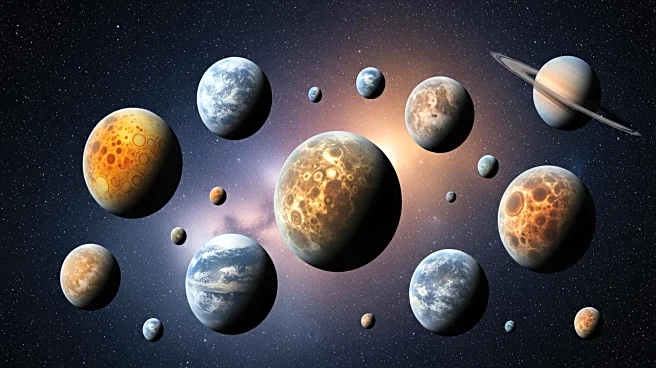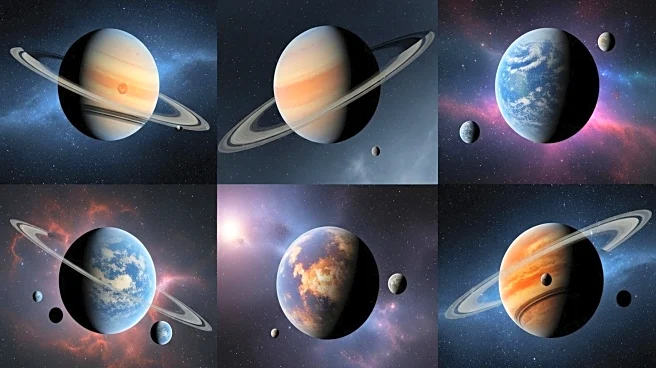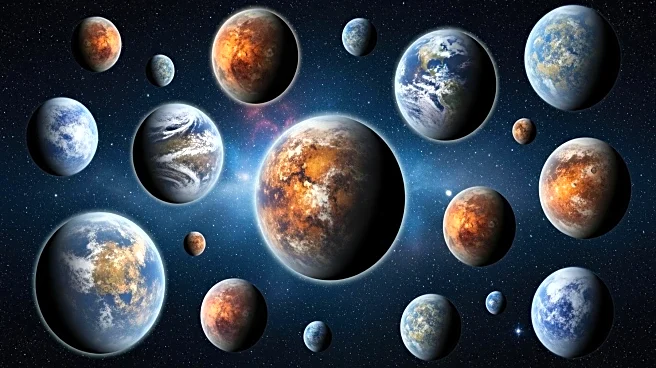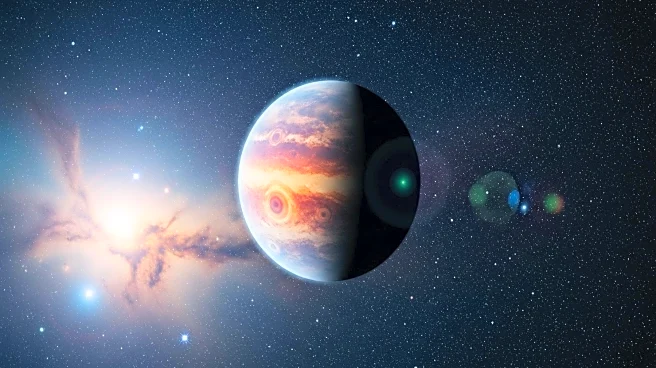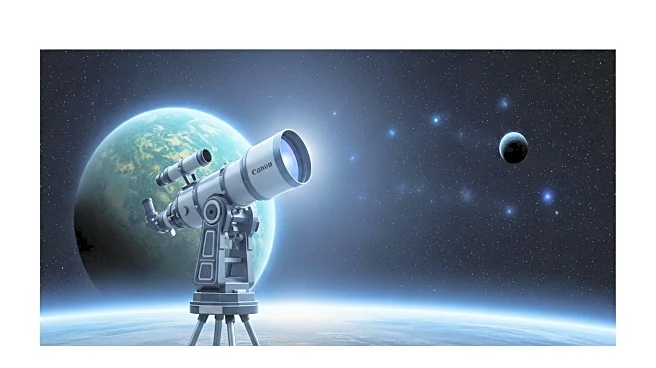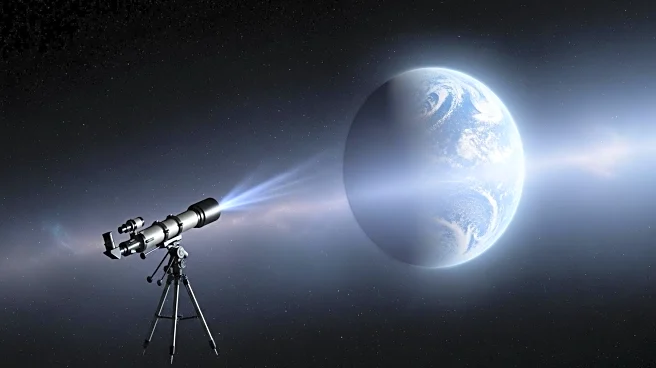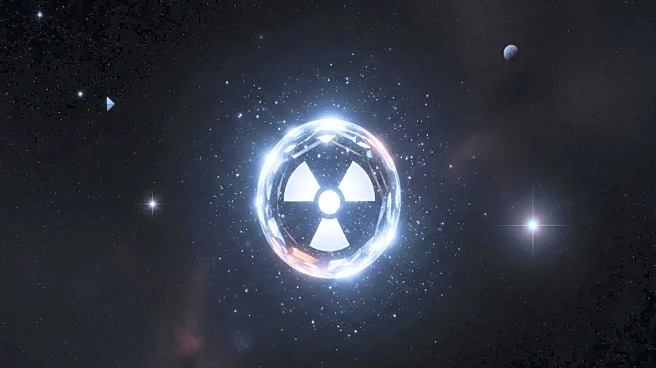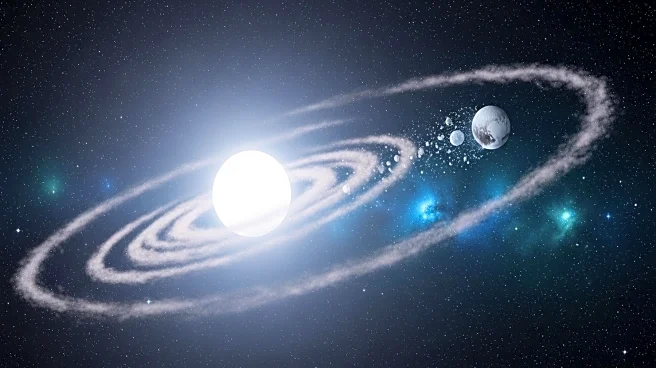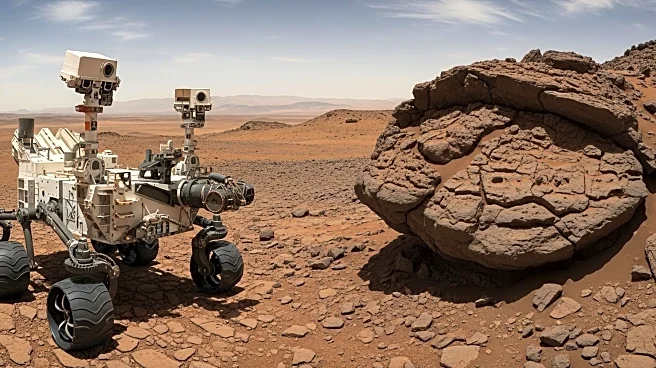What's Happening?
A study led by researchers from ETH Zurich, the Max Planck Institute for Astronomy, and UCLA has found that Earthlike planets may be more common than previously thought, while water worlds are likely rare. The study focused on sub-Neptune exoplanets, which are larger than Earth but smaller than Neptune, and often form beyond the ice barrier where surface water freezes. These planets were previously thought to become ocean worlds as they drift closer to their host stars. However, new simulations accounting for chemical interactions between the planet's interior and atmosphere suggest that most water molecules are destroyed, resulting in less water than expected. This challenges the previous belief that water worlds are abundant and highlights the potential for Earthlike planets to support life.
Why It's Important?
The findings have significant implications for theories of planetary formation and the search for life beyond Earth. While the rarity of water worlds may decrease the chances of finding life in the cosmos, the increased prevalence of Earthlike planets suggests a higher likelihood of discovering life forms similar to those on Earth. This shift in focus could influence future astrobiological research and the development of observatories capable of detecting smaller, potentially habitable planets. Understanding the conditions conducive to life on Earthlike planets is crucial for advancing the search for extraterrestrial life and refining models of planetary formation.
What's Next?
Future observatories with capabilities beyond those of the James Webb Space Telescope will be needed to confirm the prevalence of Earthlike planets. The study suggests that conditions suitable for life, with sufficient liquid water, are likely to exist only on smaller planets observable with more advanced technology. Researchers will continue to refine models of planetary formation and explore the potential for life on Earthlike planets, guiding the development of new telescopes and missions aimed at discovering habitable worlds.

